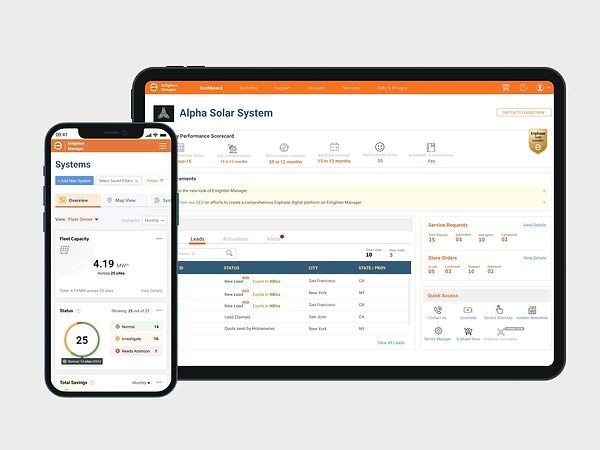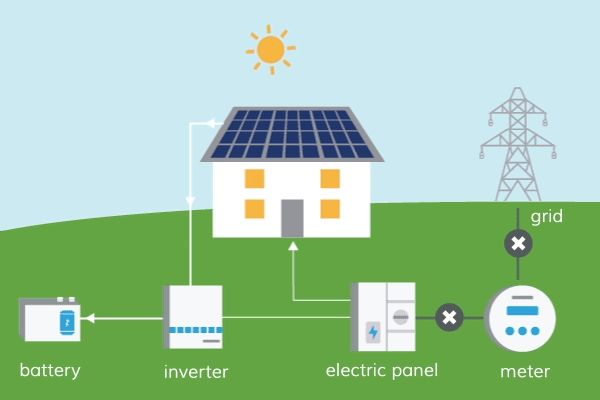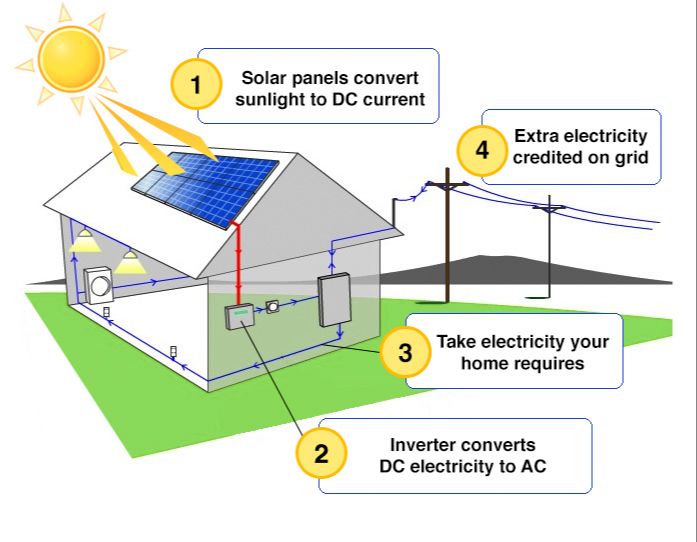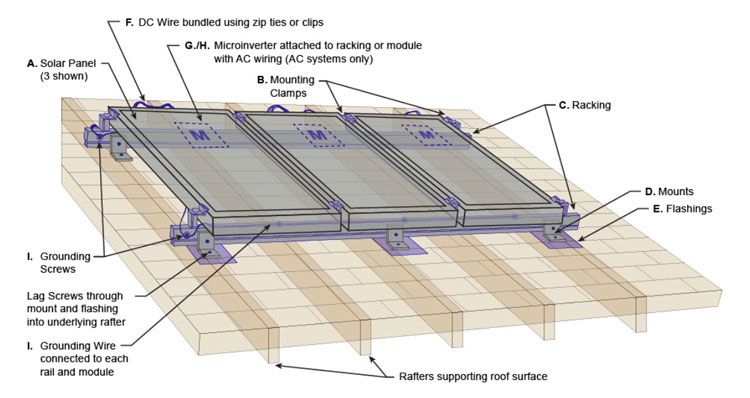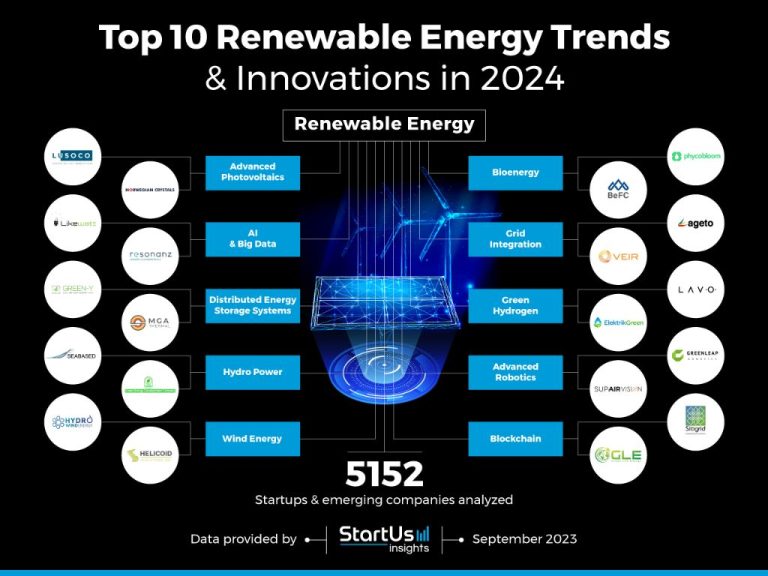Which Of The Following Energy Transformations Is An Example Of A Solar Panel?
An energy transformation is the process of changing one form of energy, such as solar energy, into another form of energy, like electrical energy. This transformation and conversion of energy allows us to utilize renewable energy sources to power our homes, businesses, and devices.
Solar panels are a common example of an energy transformation device. Solar panels, also known as photovoltaics, are able to convert energy from sunlight directly into usable electricity. When sunlight hits the solar cells inside the panel, the solar energy excites the semiconducting material, causing electrons to be knocked loose and flow freely, generating a DC electric current. This process allows us to capture the power of the sun and transform it into electricity that can be used to light up homes, charge batteries, and power electrical grids.
How Solar Panels Work
Solar panels are devices that convert sunlight into electricity. They do this through the photovoltaic effect. When sunlight hits the solar panel, the photons are absorbed by the semiconductor material in the solar cells. This energizes the electrons and causes them to flow, creating an electrical current. The photovoltaic effect is a physical process where light is converted directly into electricity at the atomic level.
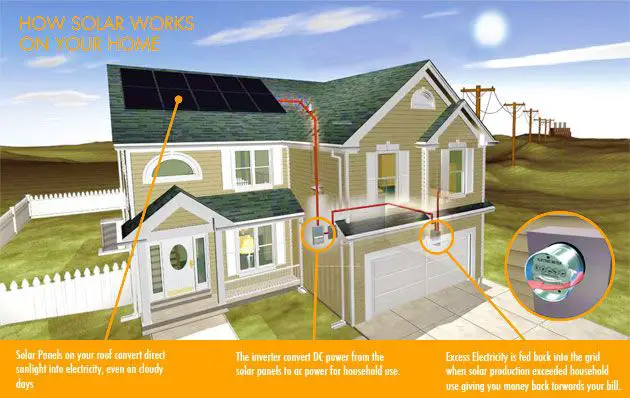
Specifically, solar panels contain photovoltaic cells made of semiconducting materials like silicon. When sunlight hits these cells, the photons are absorbed into the semiconductor, transferring their energy to the electrons. This frees up some electrons, allowing them to flow through the material and produce electricity. The photovoltaic effect causes this conversion of light to electricity.
So in summary, solar panels work by absorbing photons from sunlight which energizes electrons in the solar cell material to move and generate a DC electric current. This photovoltaic effect is the key physical process that enables solar panels to produce renewable electricity from the sun.
Solar Energy to Electrical Energy
Solar panels convert sunlight into electricity through the photovoltaic effect. When photons from sunlight strike a solar cell, they transfer their energy to electrons in the atoms of the semiconducting material, causing the electrons to become “excited” and move freely. The flow of these electrons generates an electric current that can be captured and utilized as electricity.
Specifically, silicon atoms are arranged in a crystalline structure within solar cells. Photons disrupt this structure and liberate electrons from the silicon atoms. The front and back sides of a solar cell form positively and negatively charged regions that act to drive the flow of electrons in a certain direction, creating a DC electric current. This electricity can then be used to power electrical devices, or fed into the grid.
Solar Panel Efficiency
Solar panel efficiency refers to the portion of sunlight that gets converted into electricity. Not all sunlight that hits a solar panel generates electricity. Some gets reflected off the panel surface and some generates heat rather than electricity.
Solar panel efficiency is measured as a percentage, calculated as the ratio of the electric power output from the panel vs. the amount of sunlight energy striking the panel. Most residential and commercial solar panels today have efficiencies in the 15-22% range. Some high-efficiency panels can reach over 25% efficiency.
There are a few main factors that determine overall solar panel efficiency:
- Cell technology – Monocrystalline silicon cells tend to be slightly more efficient than polycrystalline silicon cells.
- Cell quality – Higher quality cells with fewer impurities convert more sunlight into electricity.
- Panel temperature – Conversion efficiency decreases as panel temperature increases.
While higher efficiency is desirable, it comes with tradeoffs such as higher costs. Installers evaluate these factors to find the optimal balance for each solar installation.
Factors Affecting Efficiency
The efficiency of solar panels varies widely based on several factors. The leading factors that impact solar panel efficiency include:
Cell Material
The semiconductor material that solar cells are made from plays a big role in efficiency. Monocrystalline silicon cells tend to be the most efficient at 15-20%, followed by polycrystalline silicon cells at 15-17%. Newer technologies like gallium arsenide cells can reach efficiencies of 30% or higher.
Temperature
Solar panel efficiency is negatively affected by increases in temperature. On hotter days, efficiency can drop substantially. Using cooling systems can help improve performance in high temperatures. The orientation and airflow around the panels also impacts their operating temperature.
Angle of Sunlight
The angle at which sunlight hits the solar panel significantly affects efficiency. When sunlight hits perpendicularly or at angles closer to 90 degrees, the maximum amount of energy is absorbed. As the angle decreases, particularly below 60 degrees, efficiency drops sharply. Proper orientation is key.
Comparison to Other Renewables
Solar power has some advantages and disadvantages compared to other renewable energy sources like wind, hydroelectric, geothermal and biomass. Here’s a quick comparison:
Wind – Wind power is highly cost-effective and installed capacity is growing rapidly. However, it lacks the ability to provide constant power like solar since wind speeds fluctuate. Solar has an edge for distributed applications.
Hydroelectric – Hydropower provides constant baseload power but requires suitable water resources and has a large upfront environmental impact. Solar can be more distributed and adaptable.
Geothermal – Geothermal energy provides constant baseload power like hydro and has a small footprint, but viable locations are geographically limited. Solar has wider potential for distributed usage.
Biomass – Biomass can provide controllable and constant power but requires sustainable sources of feedstock. Solar has an advantage in modular and distributed applications.
Overall, solar provides unique advantages in its scalability, modularity, distribution capabilities and environmental benefits over other renewables. No single energy source is a silver bullet, and diverse energy portfolios are needed.
Environmental Impact
Solar panels have a very low environmental impact during their operational lifetime because they do not emit greenhouse gases or other pollutants. The solar panels simply absorb sunlight and convert it directly to electricity without any combustion or emissions. This makes solar a much cleaner energy source compared to fossil fuels.
However, there are some environmental concerns related to the manufacturing and disposal of solar panels. Producing the silicon, metal framing, wires, and other components requires energy and can generate some waste. There are also limitations on recycling solar panels at end of life, although new recycling methods are emerging. Typically less than 10% of the materials in a solar panel can be recycled.
But studies show that the benefits of solar energy far outweigh these concerns over the lifetime of the panels. The emission reduction from displacing fossil fuels is estimated to be over 10 times greater than the emissions from manufacturing solar panels. So while not completely emission-free, solar power is still considered one of the cleanest and greenest energy technologies available today.
Cost Effectiveness
Solar panels require a high upfront investment to purchase and install the system. However, over the long term, solar panels can provide significant cost savings compared to purchasing electricity from the utility company. Once the system is paid off, the owner can enjoy 20-30 years of free electricity from the sun. In addition, government tax credits and incentives can help offset 30-50% of the initial cost of a solar panel system. So while the short-term costs are higher, most homeowners break even within 5-10 years and realize major long-term savings. Maintenance costs for solar panels are also minimal, so they end up being a smart and profitable investment over time.
Growth and Adoption
The use of solar panels has grown substantially in recent years as costs have declined and efficiency has improved. According to industry reports, the amount of installed solar photovoltaic capacity increased over 150% between 2014-2018. Countries like China, Japan, Germany and the United States have led in total installed capacity. However, growth is occurring rapidly across the world.
The adoption of residential solar panels is expanding as homeowners seek to reduce electricity bills and some claim energy independence. Solar leasing programs have made it easier for homeowners to install panels with little to no upfront costs. Many businesses are also opting to install solar panels on large rooftops and open spaces to reduce operating costs.
The continued decline in solar panel costs along with energy storage solutions will likely accelerate growth in the coming years. Some projections estimate that by 2050, solar photovoltaics could provide up to 20% of global electricity production. While challenges remain, the future looks bright for increased adoption of this important renewable energy technology.
Conclusion
In conclusion, solar panels provide an excellent example of solar energy being transformed into electrical energy. Through the photovoltaic effect, photons from sunlight knock electrons free in silicon cells, causing an electric current. While solar panels have efficiency limitations, steady improvements in technology are helping increase their productivity. Compared to other renewables, solar PV offers scalable, modular electricity generation. Solar power’s environmental benefits and rapidly decreasing costs have also made it one of the fastest growing energy sources worldwide. With the potential to meet a significant portion of global energy demand through a clean, renewable resource, solar PV can play a major role in the world’s transition to sustainable energy use.

